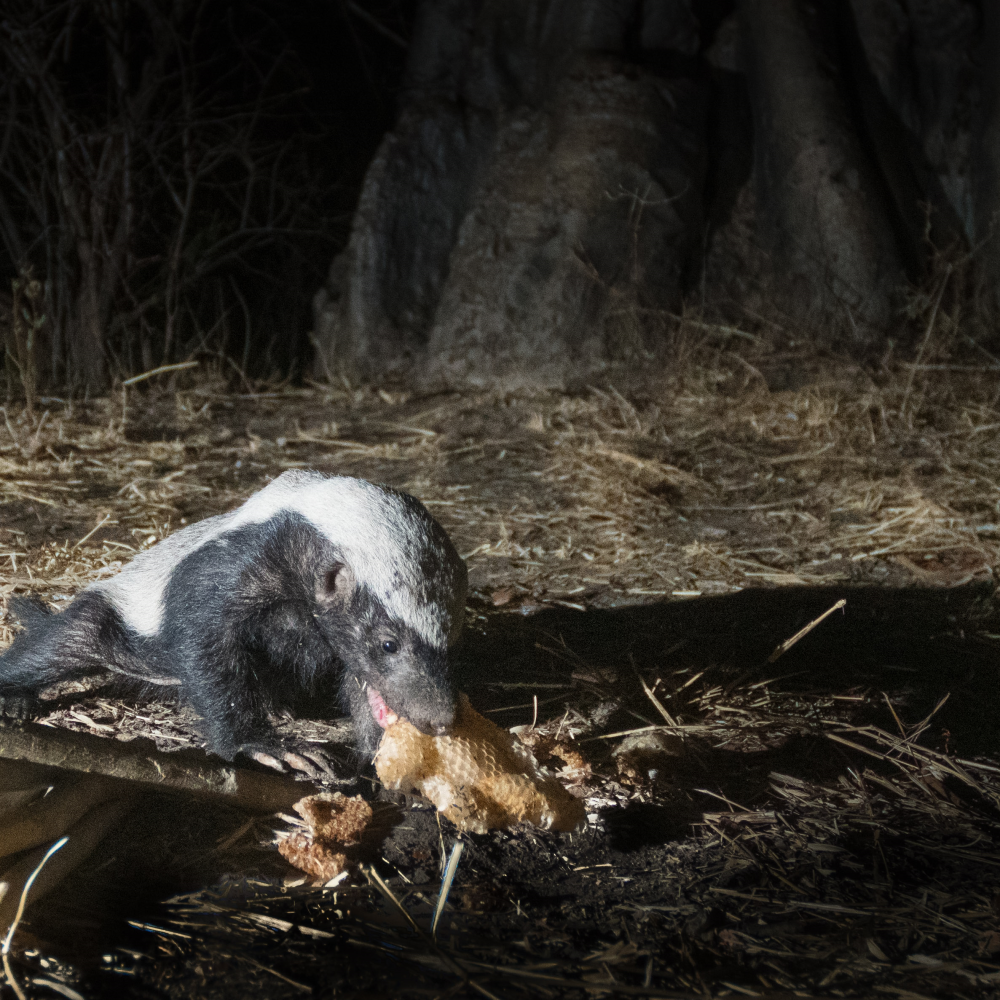Birds and honey badgers may be teaming up to carry out heists on bees, according to new research. It looked to the knowledge of locals to see if there was any stock in the Pixar-worthy tale of two species working together to access food, and found that 61 percent of the Hadzabe honey-hunters in Tanzania had seen honeyguide birds and honey badgers interacting in this way.
Honeyguides love beeswax, but they haven’t got the strength to break into bees’ nests to access it themselves. For a long time, these birds have been showing human honey hunters where wild bees’ nests are so that they could bust in for the nutritious goo, leaving the wax exposed for the honeyguides. It figures, then, that this behavior might have started out with another species that’s been around longer the humans, and it looks like that animal is probably honey badgers.
The study is the first of its kind for conducting a large-scale search for evidence of honeyguide birds (Indicator indicator) and honey badgers (Mellivora capensis) working together to commit crimes against bees. Researchers working on it carried out over 400 interviews with honey-hunters across Africa, some of whom also worked with honeyguide birds to find the source.
While 80 percent of the surveyed group had never seen the two species interact and doubted its legitimacy, some exceptions emerged. In Tanzania, there were many people from three separate communities who said they’d seen honeyguide birds and honey badgers working together to break into nests and steal honey and beeswax. Hadzabe honey-hunters operate here, and 61 percent of them said they had seen the interaction.
“Hadzabe hunter-gatherers quietly move through the landscape while hunting animals with bows and arrows, so are poised to observe badgers and honeyguides interacting without disturbing them,” said co-author Dr Brian Wood from the University of California, Los Angeles, in a statement. “Over half of the hunters reported witnessing these interactions, on a few rare occasions.”
The geographic isolation of the unlikely collaboration could be a sign that the learned behavior has been passed down from one generation to the next, sort of like the yacht-busting behaviors we’re currently seeing emerge in orca populations.
Honey badgers are in some ways an unexpected species to team up with birds owing to their lousy hearing and eyesight, which could explain why honeyguides moved onto humans when the opportunity arose. After all, what’s the use in knowing where all the bees’ nests are if your henchman can’t work out where you are or what you’re saying?

Honey badgers score highly when it comes to brute force, but their eyesight and hearing are lacking.
Image credit: Dominic Cram
“Some have speculated that the guiding behaviour of honeyguides might have evolved through interactions with honey badgers, but then the birds switched to working with humans when we came on the scene because of our superior skills in subduing bees and accessing bees’ nests,” explained senior author Dr Claire Spottiswoode from the University of Cambridge’s Department of Zoology.
“It’s an intriguing idea, but hard to test.”
The study is published in the Journal Of Zoology.
Source Link: Thieving Birds And Honey Badgers May Team Up To Steal From Bees